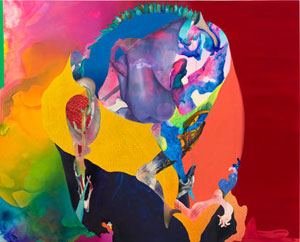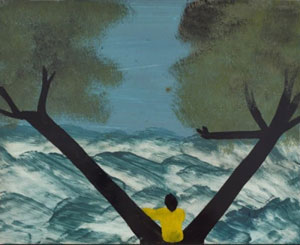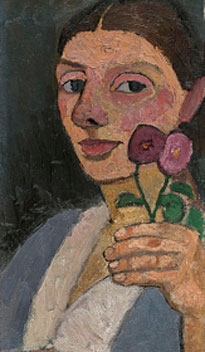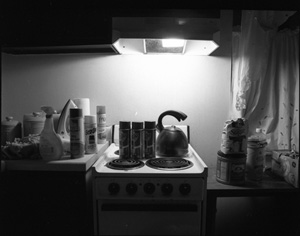9.16.24 — Peace, Art, and Understanding
For just twelve months, in a more optimistic decade, nations came together in a spirit of peace, understanding, and mass entertainment. It was the 1964 World’s Fair, and it left in its wake the New York City pavilion, today the Queens Museum.
Now the museum is once again suitable for children, with a place to add their own drawing at the end of a long brush. Thanks to Cas Holman, the paper, with a bump in the middle, doubles as a sliding pond. Childhood memories continue, along with the optimism, with Cameron A. Granger, Catalina Schliebener Muñoz, and Nsenga Knight. 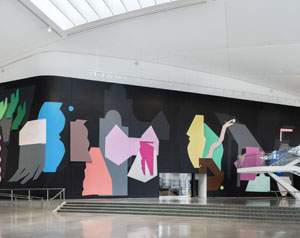 Together, they remember the divisions that a world’s fair must overcome. So through September 22 does Lyle Ashton Harris. His Shadow Works pick up where he left off at the Studio Museum in Harlem in 2011—and I refer you to my review then for more.
Together, they remember the divisions that a world’s fair must overcome. So through September 22 does Lyle Ashton Harris. His Shadow Works pick up where he left off at the Studio Museum in Harlem in 2011—and I refer you to my review then for more.
I came as a child to the World’s Fair for the rides, and I would not have settled for a slide. Still, grown-ups get to draw and to slide, too. They can also appreciate the curved wall outside the museum’s scale model of New York. As ever, the side facing out serves as a ground for large-scale work, and Caroline Kent makes the most of it. As I reported before, she mixes painted shapes with relief elements against black through December 29. They play gently but firmly with the flatness of the wall.
Not everyone looks back fondly to the fair. Barely a year ago, Charisse Pearlina Weston saw its raid on Flushing Meadow Park as coming at the expense of its neighbors and the Queens Museum as forever tainted. Perhaps, but a black community has long since given way not to state and corporate interests, but to Latin Americans and Mets fans. And the museum does its best to respond to the diversity with its artists in residence. This year’s crop does come in peace. For them all, art is a family affair as well as a global one, through January 19.
For Cameron A. Granger, it is downright childish. Remember when “I come in peace” was a stock line in approaching space aliens? A 2022 Studio Museum artist in residence, Granger sees a tool for the “liberation for black communities” in video games. I might believe it had I not seen too many gamers buried in their cell phones on the subway out. I might believe it, too, if a nook dedicated to a half-forgotten black magician had a few tricks up its sleeve.
Catalina Schliebener Muño gives her Buenos Vecinos, or “good neighbors,” a politically correct history. She also throws a party, although her painted birthday gift comes in plain brown paper. She has blob-like sculpture to brighten the affair in red and a mural featuring Donald Duck and Goofy. They serve, she swears, America’s global interests, if only for children. A second mural has a row of cartoon birds, in profile and of increasing height. Could it be her take on a much-derided image—the passage from apes on all fours to men?
Nsenga Knight mixes memories with a welcome to all. Is this a tough time to speak of peace, with the right wing in Israel and supporters of Hamas out to wipe out their enemies? Knight notes that the United Nations met in this very building when it settled on states for both sides. A 2017 Drawing Center artist in residence, she recreates settings in which she has lived, including a table set for a meal and cushions for eating while seated, Islamic style, on the floor. Both lie past glass patio doors looking out and looking in. Painted paper floats overhead as paragliders and parachutes.
Knight calls herself an Afro-Caribbean American Muslim. She cannot speak for both sides in a bitter war, and she does not pretend otherwise. She could easily have denounced the UN and its resolutions. She might see bitter echoes of Palestinian refugees in community displacement for the World’s Fair. Instead, she takes the UN’s motto, “Peace Through Understanding,” as her own. Art takes understanding, too.
Read more, now in a feature-length article on this site.
